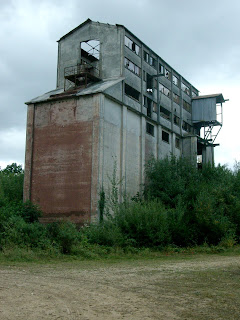
After much preparation finally the day had arrived. Debbie and I joined about 350 other women on Angel Hill. After a registering we all warmed up to music although we felt we were using too much energy which we would need later on. At 8p.m., by this time it was dark, off we set off complete with police escort. The route took us out on Northgate Street and then we followed roads leading around the edge of the town, through the various housing estates. As we passed ASDA supermarket, we were offered water and apples and some took advantage of the toilet facilities there. We continued on around the west of Bury until we came to the Hospital, this was about half way. We made a detour up to the Hospice where again water was on offer. They had supplied portaloos outside, but there were only two, which meant a long wait in line. We think we waited 20 mins, but when you consider there 350 women it could have been even longer. Then it was off for the final leg, we were on familiar walking territory as we had been out many times training in this area. Eventually four hours after starting out we arrived back at Angel Hill where there was hot chocolate and bacon rolls. It had stayed dry all evening and was not at all cold. I think we caught up all the news but there may be a few things we forgot to discuss, we may need to get out and do some more walking.
many times training in this area. Eventually four hours after starting out we arrived back at Angel Hill where there was hot chocolate and bacon rolls. It had stayed dry all evening and was not at all cold. I think we caught up all the news but there may be a few things we forgot to discuss, we may need to get out and do some more walking.
 many times training in this area. Eventually four hours after starting out we arrived back at Angel Hill where there was hot chocolate and bacon rolls. It had stayed dry all evening and was not at all cold. I think we caught up all the news but there may be a few things we forgot to discuss, we may need to get out and do some more walking.
many times training in this area. Eventually four hours after starting out we arrived back at Angel Hill where there was hot chocolate and bacon rolls. It had stayed dry all evening and was not at all cold. I think we caught up all the news but there may be a few things we forgot to discuss, we may need to get out and do some more walking.We were tired but really happy and pleased that we had completed our walk - I knew we could do it but on the day it did seem a little daunting.
This video was taken while waiting to register.









